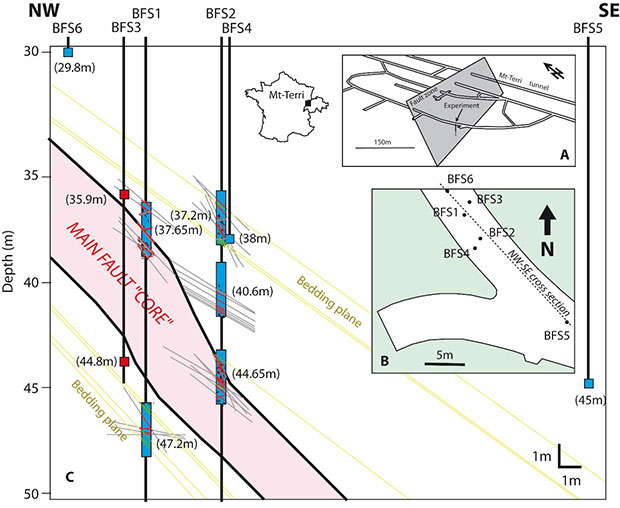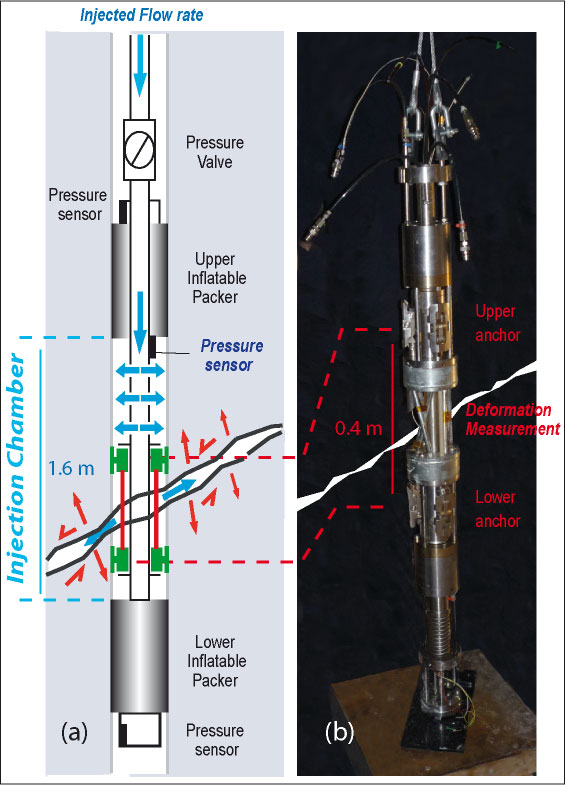DECOVALEX-2019 Task B addresses important issues related to potential creation of permeable flow paths for contaminant transport in otherwise low permeability argillaceous rocks. Such flow paths could be created by reactivating faults of various sizes by thermal, hydraulic and mechanical disturbance during operational or post-closure period. Faults might be reactivated by pore pressure changes induced by thermal pressurization (Rutqvist et al. 2014) or by gas generation. The objective of DECOVALEX-2019, Task B is to develop, compare and validate models for activation of minor and major faults, including mechanical responses and associated changes in fault permeability. Task B uses field data from fault activation experiments recently performed at the Mont Terri underground research laboratory, Switzerland (Gulielmi, 2016). Figure 1 provides an overview of this set of experiments, which in the Mont Terri project is denoted as the FS Experiment. The experiment explores the couplings between fault reactivation in a clay host rock and the potential enhanced fluid displacement through a previously low-permeability formation. international Mont Terri rock laboratory in Switzerland.

The work being conducted under Task B has a direct bearing on a wide range of sub-surface geo-engineering applications beyond geological radioactive waste disposal. We are therefore interested in organisations not traditionally part of DECOVALEX or the radioactive waste management industry, to participate in this task. The project feels that there is a real opportunity for mutual benefit by bringing broader Earth science expertise to bear on the data. This is a new and exciting step for the DECOVALEX project; if you have a potential interest in this task, please contact Jens Birkholzer in the first instance, and we would be delighted to initiate a discussion.
The Task B of DECOVALEX-2019 is planned to be conducted in the following three steps with progressively increasing complexity:
The idea is to start in Step 1 with modelling of a single fault plane broadly representing the minor fault to be modelled in Step 2. It is a simplified representation of the fault plane and geometry and will be used for the modelling teams to familiarize themselves with the problem and allow for necessary model developments and testing related to modelling of fault activation processes. This could include important aspects of developing and testing new constitutive models for fault hydro-mechanical behavior. The real step pressure injection scheme will be applied during this initial benchmark modelling and reasonable estimated properties for Opalinus Clay and the minor fault will be taken from the site investigations at Mont Terri to facilitate a smooth transition to Step 2. The simulations in Step 1 will be conducted in both 2D and 3D to facilitate comparison of model results for benchmarking of the different codes.
The following lists Research Teams participating in DECOVALEX-2019 Task B and their Funding Organizations:

For further information, please contact the task leaders, Dr. Bastian Graupner and Dr. Jonny Rutqvist